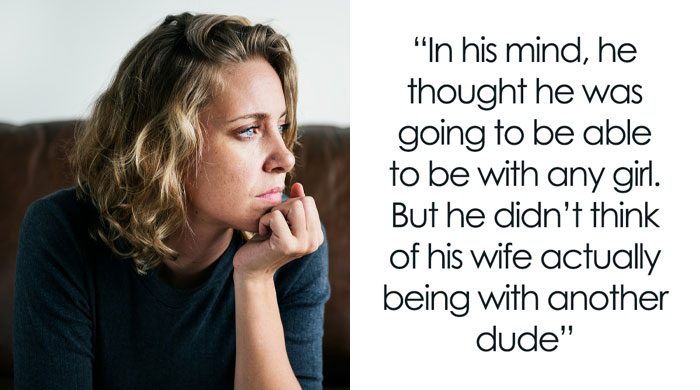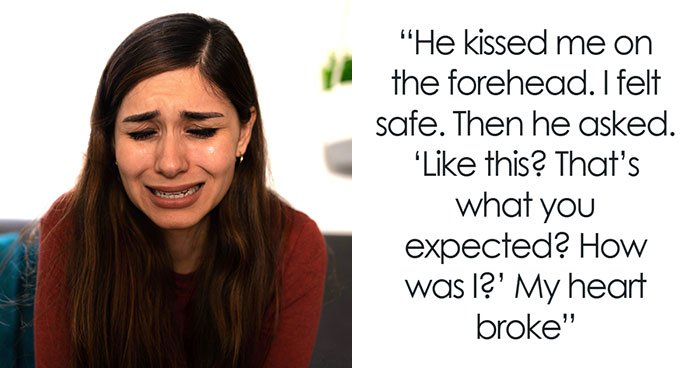
Designers Show How Everyone Can Make A Simple DIY Cardboard Mask With A Replaceable Filter At Home
InterviewAs coronavirus is spreading across the world, countries have taken increasingly aggressive measures to fight it, telling citizens to wear masks, even if they’re homemade.
It’s important to note that wearing one will not guarantee protection against COVID-19, however, face masks can reduce the spread of coronavirus by blocking outgoing germs from coughs or sneezes of an infected person.
So, since commercially made face masks have become so difficult to find, a Russian team lead by Evgeny Maslov created a cardboard design with a replaceable filter and showed how everyone can make it at home.
More info: bumask.ru
Image credits: Evgeny Maslov
The creators claim their mask “doesn’t require technical skills and is extremely fast to produce anywhere in the world. Filter replacements can be made from available materials,” they said in a statement.
However, even though the team says people can recycle the mask as standard cardboard waste, the World Health Organization (WHO) advises discarding all face masks immediately after use in a closed bin and cleaning your hands afterward with alcohol-based hand rub or soap and water.
Image credits: Evgeny Maslov
“After coming to Moscow for a few days in March 2020, I ended up having to stay for weeks,” Maslov said. “First, because of quarantine, then because of flight cancellations. After that, I made a conscious choice to … put all of my knowledge to use. That led me to [start] a non-commercial project-lab [with] a goal to put together … lead designers for quick creation of … necessary objects which can greatly benefit society and provide designs to manufacturers in critical situations.”
Image credits: Evgeny Maslov
“We chose cardboard to make the production of the mask easy for any printing house or domestic [user],” Evgeny told Bored Panda. “It quickly folds into an ergonomic form. A special or accessible filter material is folded into several layers and inserted, filtering the incoming and outgoing air. The element is replaceable, the mask itself is designed for 2-3 cycles of filter change and can be recycled after use. The mask is available as a flat package for delivery free of charge via a courier service or distributed in public places.”
Image credits: Evgeny Maslov
Evgeny said his team wants to provide protection to people where, for some reason, other forms don’t exist. “Also, we want to do it as fast as possible, free of charge, and with the possibility of easy usage and replacement at home anywhere in the world.”
Image credits: Evgeny Maslov
“We also want to find good partners,” he said. “But according to our vision, the mask itself has to be free for the final customers. No doubt.” The creator of BUMASK wanted to use the opportunity and address representatives of banks, post offices, courier services and other organizations whose main value is their employees. “If you are ready to produce these masks, pay to those who could produce them, or if you simply understand how important it is to develop [this project], write to me.”
Image credits: Evgeny Maslov
The designers are distributing the blueprint of their invention through open file access along with detailed instructions for its production.
Image credits: Evgeny Maslov
Image credits: Evgeny Maslov
Image credits: Evgeny Maslov
Image credits: Evgeny Maslov
Scientists around the US have taken it upon themselves to identify everyday materials that do a better job of filtering microscopic particles. “In recent tests, HEPA furnace filters scored well, as did vacuum cleaner bags, layers of 600-count pillowcases and fabric similar to flannel pajamas. Stacked coffee filters had medium scores. Scarves and bandanna material had the lowest scores, but still captured a small percentage of particles,” Tara Parker-Pope wrote in The New York Times.
If you don’t have any of the mentioned materials, a simple light test can help you decide whether a fabric is a good candidate for a mask.
“Hold it up to a bright light,” Dr. Scott Segal, chairman of anesthesiology at Wake Forest Baptist Health who recently studied homemade masks, said. “If light passes really easily through the fibers and you can almost see the fibers, it’s not a good fabric. If it’s a denser weave of thicker material and light doesn’t pass through it as much, that’s the material you want to use.”
Most importantly, any face covering is better than none, especially if worn by a person who has the virus but doesn’t know it yet. For more information on how to effectively use face masks, check out this guide by the WHO.
Image credits: Evgeny Maslov
35Kviews
Share on FacebookIs there supposed to be fabric covering the holes? If not, this mask is pretty much useless.
They said "Filter replacements can be made of available material".
Load More Replies...This is terrible mask. Terrible idea. Terrible Advice. Just sew one yourself. . The Fabric needs to be dense to stop particles from your nose and mouse from exiting. It needs to actually fit your face. Walking around looking like Optimus Prime sounds fun but it is not very practical. This this is just terrible. This is as much protection to others and yourself as a Bug net is. Evgeny Maslov and his Russian team are dolts! This story should be pulled off Boredpanda and replaced with a do it yourself hand sewn mask tutorial. Stuff like this can actually cause more harm then good.
Yes! Soaking cardboard with warm, moist air sounds like an excellent idea.. idiots. Leave the mask making to professionals.
Non pro's can make ueful masks. If experts provide the design. This design is useless. But there are some cloth mask designs that are helpful and wearable. It's not as much as wearing a n95 mask, but it is a lot better than wearing nothing. But this design here will not help at all...
Load More Replies...I see holes, I see mesh, I see cardboard. It's only a placebo, completely worthless for protection.
If you take the time to read it you'll see that the woman has filter material he covers the bridge of her nose The Mask holds it up firmly against her face in the last photo with the guy with the glasses on there's no filtering material that's why there's air spaces go over to the other website download the PDF figure it out but think before you call people idiots
Is there supposed to be fabric covering the holes? If not, this mask is pretty much useless.
They said "Filter replacements can be made of available material".
Load More Replies...This is terrible mask. Terrible idea. Terrible Advice. Just sew one yourself. . The Fabric needs to be dense to stop particles from your nose and mouse from exiting. It needs to actually fit your face. Walking around looking like Optimus Prime sounds fun but it is not very practical. This this is just terrible. This is as much protection to others and yourself as a Bug net is. Evgeny Maslov and his Russian team are dolts! This story should be pulled off Boredpanda and replaced with a do it yourself hand sewn mask tutorial. Stuff like this can actually cause more harm then good.
Yes! Soaking cardboard with warm, moist air sounds like an excellent idea.. idiots. Leave the mask making to professionals.
Non pro's can make ueful masks. If experts provide the design. This design is useless. But there are some cloth mask designs that are helpful and wearable. It's not as much as wearing a n95 mask, but it is a lot better than wearing nothing. But this design here will not help at all...
Load More Replies...I see holes, I see mesh, I see cardboard. It's only a placebo, completely worthless for protection.
If you take the time to read it you'll see that the woman has filter material he covers the bridge of her nose The Mask holds it up firmly against her face in the last photo with the guy with the glasses on there's no filtering material that's why there's air spaces go over to the other website download the PDF figure it out but think before you call people idiots

 Dark Mode
Dark Mode 

 No fees, cancel anytime
No fees, cancel anytime 





























































52
27